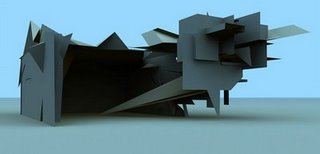 Science is a beautiful thing and, sometimes quite literally, a work of art. Such specimens spotlighting the universe, the natural world, and technology are on display at the Pasadena Museum of California Art through April 12.
Science is a beautiful thing and, sometimes quite literally, a work of art. Such specimens spotlighting the universe, the natural world, and technology are on display at the Pasadena Museum of California Art through April 12.
In the main gallery, “Data + Art,” curated by Jet Propulsion Laboratory Visual Strategist Dan Goods and Mars Public Engagement Outreach Coordinator David Delgado, features numerous works that express scientific data in creative visual (and auditory) ways, as well as some materials used in NASA missions, such as a material called Aerogel that is 99.8% air and was used to collect dust from a comet. The project gallery has colorful Scanning Electron Microscope images by David Scharf. In the back gallery, guests can don 3D glasses and ogle the Martian landscape captured by Jet Propulsion Laboratory’s Mars Reconnaissance Orbiter. The three exhibits make for a thoughtful and intriguing — okay, mind-blowing — experience.
Movement or sound make many of the “Data + Art” works especially interesting. “Flight Patterns” is a constantly changing digital work using flight path information from the FAA; and an animated video, accompanied by an upbeat, rhythmic soundtrack, uses MRI data to explore the development of a quail inside an egg. A couple of works use classical music to make physical information audible. Radiohead fans will appreciate the DVD detailing the making of the band’s “House of Cards” video with a robotic laser scanner, one of which will capture your body and movement on a large screen. Other items of note include a giant hundred dollar bill, miniature drawing robots, a tiny disk etched with 13,000 pages of information, and an incredible visual representation of the number of people imprisoned in the US in 2005.
Alex Dragulescu’s architectural designs generated by computer programs using junk email as input (see photo) are spiky and impractical and, oddly enough, bear a resemblance to Scharf’s images of ascorbic acid crystals or kidney stones magnified thousands of times their actual size. Scharf’s digital images captured with the S.E.M. technology he developed include pollen grains, salmonella, and other natural subjects in prismatic color and enlarged to reveal interesting patterns and the unbelievable complexity sometimes invisible to the naked eye. Cannabis flowers magnified 400 times, for instance, look like a psychedelic landscape of mushrooms.
This is not the first meeting of science and art in Pasadena; the city’s world-famous JPL and California Institute of Technology have collaborated with other local arts institutions, including the Armory Center for the Arts and Art Center College of Design. The PMCA’s current exhibits succeed (as the shows at this modest, high-quality museum devoted to California art and design from 1850 to the present usually do) at being manageable in size, accessible, and stimulating.
Upcoming programs include a gallery walkthrough with the “Data + Art” curators on Feb. 7 and a panel discussion with the curators and artists on Feb. 28. For details and other events, visit www.pmcaonline.org.
PMCA, 490 E. Union St., (626) 568-3665, www.pmcaonline.org. Open Wed.-Sun., noon-5 pm. General admission $7, free first Friday of the month.





